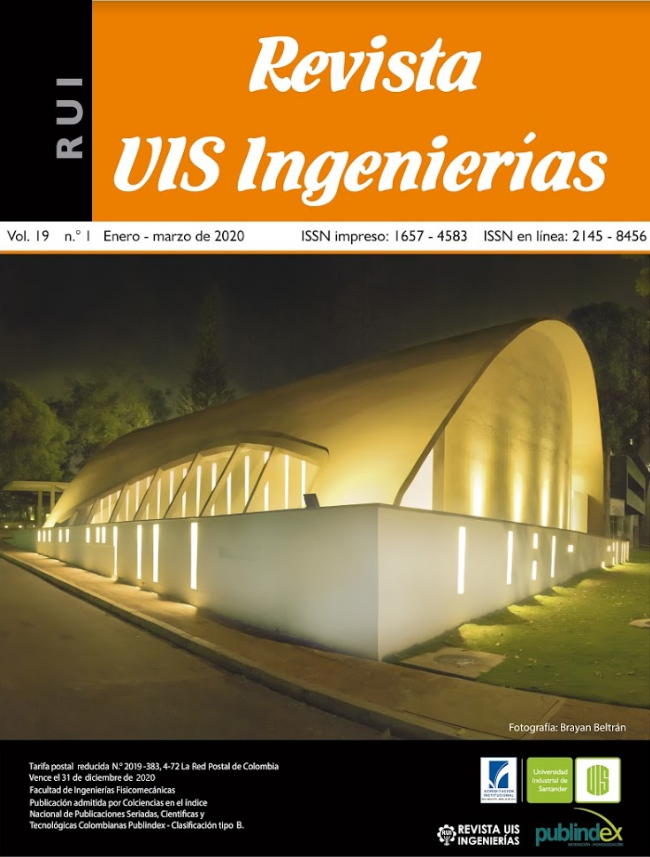Engineering research in Colombia
Published 2019-10-25
Keywords
- engineering in Colombia,
- scientific production,
- VOSviewer
How to Cite
Copyright (c) 2020 Revista UIS Ingenierías

This work is licensed under a Creative Commons Attribution-NoDerivatives 4.0 International License.
Abstract
With the beginning of a new decade, there are strong changes in many of the engineering paradigms, and of course, these changes will affect our society. The emergence of disruptive technologies such as, e.g., artificial intelligence, additive manufacturing, augmented reality, pose a new scenario for engineering, where countries that adopt these new technologies in a timely manner will have an advantage. In this sense, it is important to assess the current state of research in the area of engineering in Colombia, and try to define a scenario where we can effectively face the new challenges that arise in this new industrial revolution. There is a sustained growth of research output in the subject area of Engineering, supported by the internationalization of science, which with great effort, has tried to overcome the shortcomings associated with the lack of investment in science and technology in Colombia. Scientific production has increased in quantity, partly thanks to knowledge management based on academic capitalism and the challenge is now to improve the quality and impact of the research carried out. In this sense, it is important to direct investment policies in science and technology towards applied research, in a way that allows us to address problems associated with the challenges in sustainable development and the transformation of society.
Downloads
References
[2] S. Lab, “SJR Visualization Tools,” 2020 [En línea]. Disponible en: https://www.scimagojr.com/viztools.php.
[3] Grupo Banco Mundial, “Gasto en investigación y desarrollo (% del PIB) Data,” 2019. [En línea]. Disponible en:: https://datos.bancomundial.org/indicador/GB.XPD.RSDV.GD.ZS.
[4] Elsevier B.V., “Scopus,” 2020. [En línea]. Disponible en: Available: http://www.scopus.com/
[5] N. J. van Eck and L. Waltman, “Software survey: VOSviewer, a computer program for bibliometric mapping,” Scientometrics, vol. 84, no. 2, pp. 523–538, Aug. 2010.
[6] M. Stojek and J. Pietraszek, “Simulation-Based Engineering Science Challenges of the 21st Century,” Appl. Mech. Mater., vol. 712, pp. 3–8, 2015.
[7] C. A. Garzón and C. E. Moreno, “La facultad de ingeniería 2030,” Ing. e Investig., vol. 31, no. 1, pp. 91–99, 2011.
[8] I. C. Montes and P. Mendoza, “Docencia e investigación en Colombia desde la perspectiva del capitalismo académico,” Educ. Policy Anal. Arch., vol. 26, no. 40, pp. 1–33, 2018.
[9] G. Rueda-Barrios and M. Rodenes-Adam, “Factores determinantes en la producción científica de los grupos de investigación en Colombia,” Rev. Española Doc. Científica, vol. 39, no. 1, pp. 1–16, 2016.

